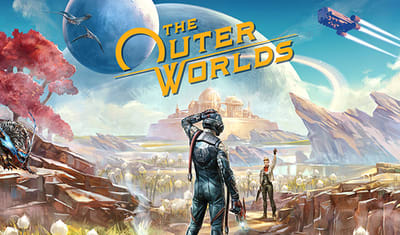
The Outer Worlds Review
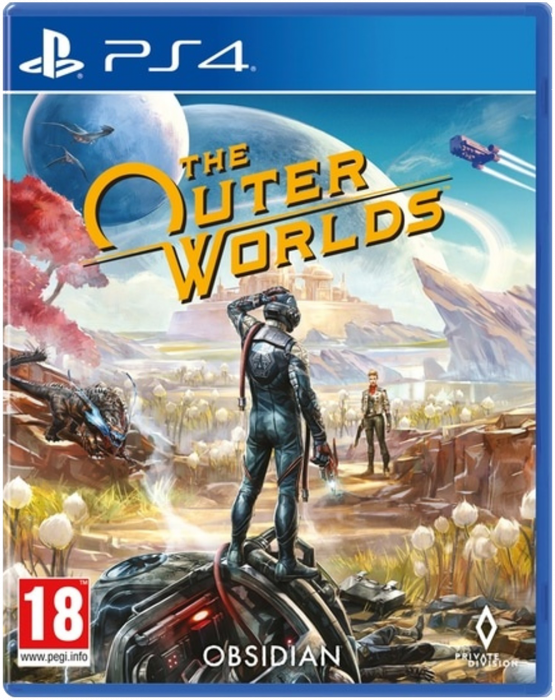
Pros
- Intricate branching quests with multiple solutions
- Clever writing brings interesting characters and world-building to the fore
- Streamlined but effective RPG mechanics
- No forced online components or microtransactions
Cons
- Simplistic combat
- Low enemy/loot variety
- Somewhat ugly character models
When The Outer Worlds was revealed at the end of 2018, Obsidian Entertainment touted the pedigree of their own studio and their new game, boasting that it came “from the original creators of Fallout and the developers of Fallout: New Vegas”. Such a claim purposefully evoked comparisons of older, single-player role-playing games where player choice, witty dialogue, detailed worlds and interesting characters were paramount. Here Obsidian Entertainment planted their flag, and proved once again that at their best they’re masters of the genre - The Outer Worlds may just be the studio’s magnum opus.
Your adventures in the Halcyon system begin when your protagonist is plucked from cryostasis by an eccentric doctor of dubious morality. Not only does this set the stage for the story ahead, but as one of the anonymous, long-abandoned colonists left adrift for decades at the edges of the Halcyon colony you’ll be prompted to define your character by picking their attributes, skills, aptitude and appearance. Here is where you’ll first get a glimpse of the “less is more” philosophy of The Outer Worlds, as while familiar RPG staples are present, they’re greatly simplified, striking that fine line between cumbersome and redundant.
You only have six attributes, split into pairs in three categories: Body (Strength and Dexterity), Mind (Intelligence and Perception) and Personality (Charm and Temperament), and each of these attributes ranges over five points: Below Average, Average, Good, High and Very High. Not only do your attributes grant simple, but easy to understand and quantify passive effects, they also influence your skills to a minor extent. Your skills are likewise categorized into groups, and in a novel approach skill points earned are initially invested into a broad category, boosting all related skills until said skill scores are 50, at which point you’ll need to start investing into individual skills. For example, at the start you don’t directly boost Persuade, Lie and Intimidate, but rather you invest in the “Dialogue” tree. It’s a sensible system which bypasses some old meta-game questions (why is my character - an otherwise competent sniper - useless when switching to a handgun?) and allows your character to quickly gain competence in fields, while mastery remains elusive.
The commentary of the doctor as you assign skill points gives you one of your first glimpses into the tongue-in-cheek humor the permeates The Outer Worlds, and can’t help but draw comparisons to Obsidian Entertainment’s past ventures into games of this sort. After your character is created and you’re dispatched on your first quest you’ll find yourself on what can only be called a corporate dystopia, and early interactions will shed light on the plight faced by everyday colonists in Halcyon. Graves are rented, human bodies are treated as corporate property (one case of suicide is viewed as corporate vandalism rather than a human tragedy), illness is viewed as tied to work ethic (and medicine is rationed according to a worker’s presumed value), and while the social commentary is over-the-top, many aspects of it hit a little too close to home at times.
Excellent writing helps sell a grim corporate dystopia.
This all sets up one of the game’s main sources of contention, factional strife between a coalition of loosely aligned corporate interests - collectively known as “The Board” - and various disaffected opposition groups that consist of the traditional enemies of excessive corporate capitalism including disgruntled former corporate employees striving to create a worker’s co-op, a reformist corporation and ruggedly independent quasi-anarchists. This isn’t a simple narrative of the evil, incompetent bourgeoisie versus the plucky, underdog proletariat - not all corporations get along, nor do all non-corporate factions, and the actions of the non-corporate factions at times ironically undermine the freedoms and well-being of workers in the name of the greater good, while corporate power is sometimes portrayed as the lesser of two evils - a necessary bulwark against the instability inherent in trying to survive in the hostile Halcyon system.
Shades of gray abound, and all of this is tracked by a simple but effective reputation system. Complete quests for a faction in ways that benefit said faction (or at least its constituents) and your positive reputation will improve, while if you take actions that hinder a faction you’ll gain negative reputation. These two factors aren’t mutually exclusive, and it’s quite possible to earn a mixed reputation, depending on your actions. Not only will a high positive reputation enhance vendor prices in areas controlled by that faction, but you may receive more tangible assistance later on in the story. Keeping everybody happy is difficult, but to some degree possible if your protagonist possesses a silver tongue, while less socially-gifted characters will likely alienate various factions in the course of their adventure.
Navigating the often-intricate politics in The Outer Worlds can be a tricky affair, as many of the quests you’ll undertake are wonderfully complex, offering you multiple ways to complete them. You’ll frequently be tasked with some manner of quid pro quo only to be given a counter-offer by a rival faction midway through the quest, and double-crosses and nuance abound, whether it be betraying one settlement for another (then ousting the leader of the settlement you sided with in favor of the one you betrayed) or obtaining an item that’ll shift the balance of power between two factions to bring them both to the negotiating table. The quests are wonderfully labyrinthine to the point that when you get the odd fetch quest or simple extermination assignment it’s refreshing instead of tedious.
Not only are the quest options diplomatically intricate, but often mechanically varied, as well, allowing for stealth, diplomatic or violent solutions. Hacking a terminal to shut down automated defenses, sneaking over to an alarm to draw guards away from your goal, or simply running in and gunning your opponents down are all viable options, and just as it’s uncommon to find a quest that doesn’t have some twist or narrative decision, it’s equally uncommon to find yourself in an encounter that can’t be avoided or altered by some skill check or a bit of sneaking, excepting the battles with roving wildlife or marauders.
Further adding to gameplay variety is the “shroud”, which you’ll be introduced to shortly into the game. With the proper ID cartridge (obtaining these are often optional in their own right) you’ll be able to holographically disguise yourself in restricted areas and avoid detection without necessarily having to leverage stealth directly. These shroud sections add another layer of gameplay to the typical combat, diplomacy, stealth gameplay pyramid. As you move about in restricted areas with your shroud active, you’ll drain its energy, encouraging efficient exploration to reach objectives. Should your shroud deplete you’ll risk being exposed, at which point conventional stealth can extend your exploration. If you are detected by guards without a charged shroud, however, you can attempt to pass a dialogue check to talk the guard out of a fight, replenishing your shroud’s energy in the process, and failing that you can always just leave the restricted area to recharge your shroud.
At some point, however, combat will be necessary, and while not technically incompetent, combat is perhaps one of The Outer Worlds’ weakest points. Enemies are designed to be shot at (something many shooter role-playing games have yet to appreciate the value of) with obvious weakpoints you can target for bonus damage, but your foes lack both variety in type and attacks. Enemy marauders, a few types of robots, ape-like Primals, dog-like Canids, reptilian Raptidons and insectoid Mantids make up almost all the enemies you’ll face on your journey, and the entire catalog of enemy attacks can likewise be summed up succinctly as the odd melee attack, gunfire, lobbed rock or glob of acid. Sneak attacks (complete with obligatory kill-cam) are one of the few ways to ramp up damage, and while a variety of damage types exist (physical, plasma, corrosion, shock and N-ray) exist and have their appropriate strengths and weaknesses, it never felt terribly necessary to bother with on normal difficulty.
You can use Tactical Time Dilation to slow down combat and inflict great damage.
To diversify combat somewhat you have Tactical Time Dilation (TTD), which is similar to the implementation of V.A.T.S. in the more recent Fallout games in that it slows down time, allowing you to target attacks to greater effect. When TTD is active you’ll be free to move about as normal, but moving and attacks (especially the latter) will deplete your TTD meter, which recharges when not in use. Not only does this help with aiming at enemy weakpoints, but some weapons have bonus effects, potentially allowing you to knock down, stagger, or stun enemies, or inflict status effects like bleed and burn. Your companions also have special attacks you can instruct them to perform with a click of the d-pad, provided you have sufficiently invested in the Inspiration skill.
As you complete quests you’ll earn experience, collect loot and level up, as is the norm for role-playing games, earning skill points to spend in skills as well as perks at every even level. Perks are divided into three tiers, with later tiers unlocking after purchasing five perks in lower tiers. Over the game’s thirty levels of progression you’ll earn a good number of perks, which have various effects that help flesh out your character more, including expected staples like passive bonuses to various stats (carry weight, armor, health, TTD amount/recharge rate), bonuses gained for going without companions, the ability to restore TTD and health when you kill enemies, better vendor stock/prices, slower durability loss, etc.
You’ll also be given a choice to select flaws for your character under certain conditions - usually after taking enough damage from a specific type of enemy, or sustaining a significant amount of a specific type of damage. Flaws give you some weakness against said enemies or damage type, but in exchange for accepting a flaw you’ll gain a free perk to spend. While not as expansive as it could be, it’s an interesting inclusion worth strategic consideration; it might not be wise to accept a flaw that increases the physical damage you take, but taking the Pithecophobia flaw and suffering attribute penalties when fighting Primals might be an isolated enough penalty to justify gaining an extra perk. Flaws and attribute choices are permanent, but you can respec in your ship any time you wish (provided you can pay the escalating price in Bits - the game’s currency) to reset your skill point and perk allocations.
The loot you’ll pick up also covers expected genre staples; you’ll find both ranged and melee weapons, conventional arms, energy weapons and the rare science weapons, while armor ranges from clothing to patched exosuits to power armor. These perform how you’d generally expect, with one-handed weapons attacking faster than two-handed weapons, different types of melee weapons having a variable number of attacks in an attack sequence before a brief pause, and guns having different effective ranges, fire rates, reload speeds. Experimentation with these weapons will allow you to pick what suits your playstyle, and the ability to equip four different weapons at once will ensure you’ve got a varied arsenal for whatever situation you find yourself in.
Weapons and armor, as noted earlier, have different properties - damage types and special effects for weapons, while armor typically boosts certain skills when worn. These can be broad categories, like an entire class of skills, or a specific skill, or even passive effects like sneak attack damage. Shooting guns consumes ammo, and using weapons and taking damage while wearing armor will reduce their durability, but fortunately The Outer Worlds simplifies these systems considerably. There are only three types of ammo you’ll need to worry about - light, heavy and energy - while weapons and armor can be repaired with Weapon Parts and Armor Parts, respectively, which can be obtained by purchasing them from vending machines, found as loot on vanquished foes, or scavenged from unwanted weapons and armor you can break down.
Upgrading weapons and armor is also a simple matter, as you’ll find a variety of weapon and armor mods you can slot into gear, enhancing parameters like weapon spread, damage type, scope zoom, muzzle noise, magazine since, attack speed, armor rating, carry capacity, etc. To boost the basic parameters (damage and armor) of your equipment you need merely “tinker” with them at workbenches, spending Bits to improve the item’s level. The further you boost an item’s level, the more Bits it’ll cost, but upgrades aren’t usually too far off, and a moderate investment of Bits into your gear has an appreciable effect on performance. These gameplay conventions provide the options expected in such games without becoming a burden, and help ensure that the gear you find serves some purpose, even if it’s just to be broken down into parts or sold for Bits.
Familiar staples like lockpicking are present in The Outer Worlds, and appreciably simplified.
Role-playing staples like hacking computers and picking locks has also been simplified, and for the better. There’s no minigame to fiddle with in The Outer Worlds, when presented with one of the game’s numerous locked objects (or decidedly less numerous hackable terminals) you’ll be given simple requirements by which to bypass the security in question. Typically you’ll need a skill score of sufficient value in either Hack or Lockpick, and depending on how much your skill exceeds the requirements of the lock or computer in question you’ll be forced to expend a number of Bypass Shunts (for hacking) or Mag-Picks (for lockpicking), and the time required to complete the action will decrease, making it more likely that you’ll attract unwanted attention. It’s a straightforward system, but one that sensibly incentivizes you to invest in these skills.
Over the course of your adventures you’ll be able to recruit up to six companions, any two of which can travel with you at any given time. Not only do they have unique personalities and quests (frequently - and sometimes usefully - interjecting during conversations) but they come with their own skill affinities and special abilities, the latter of which you can make use of once your Inspiration skill is high enough. As for skills, they’ll sometimes offer use of them during specific quests, which is usually suggested ahead of time. As a more universal bonus, however, a quarter of your active companion’s skills are added to your own as a temporary bonus, and investing into the Inspiration skill can increase this bonus to 50%, providing a huge boost to your own skills that makes your companions well worth bringing along.
Your companions each have a special ability that you can call upon in combat.
You companions will also help out competently enough in combat, capable of being equipped with a ranged weapon, a melee weapon, a helmet and armor. They level up with you and have their own perk trees, which are greatly simplified, gaining a perk every five levels. Companion perks include passive team bonuses unique to each individual and generic perks like boosts to health, armor, special ability damage or cooldown, and the amount of aggro generated. In addition you can toggle the distance at which they follow you and set the terms at which they’ll engage, and if that’s not enough you can also direct them to go to specific locations or target specific enemies. It’s not a grand suite of options, but it’s functional and helps ensure your companions are contributing well enough.
Graphically The Outer Worlds is no marvel, with characters models looking decidedly lack-luster. While it won’t win any awards for graphical fidelity, solid art direction does go a long way towards mitigating its flaws, and notably Obsidian Entertainment avoided the trend of flushing their dystopic sci-fi adventure with a depressing shades of browns and grays. The Halcyon colonies may be filled with dangerous wildlife and oppressive corporations, but the worlds you’ll visit are still colorful, vibrant even, and the corporate branding is designed to be eye-catching and disarming. Corporate tyranny in The Outer Worlds is both omni-present and negligent, authoritarian, but with snappy jingles and rehearsed mottoes. This is perfectly reflected by bright, colorful logos and propaganda posters slapped onto degrading, junk-filled pre-fabricated domiciles with a western chic.
The voice acting and music and sound effects are competent as well. There were no epic battle tracks that specifically caught our ear, but a dour, simple tune that played in a settlement helped convey the effects of our actions on downtrodden and infuse us with a sense of guilt. All spoken lines are accompanied with voice acting with more than a few good reads, but we did encounter a situation where a single character had two different voices - one for when we were talking to him as part of a quest, and another voice (a more generic corporate guard voice) when he caught us stealing. Worthy of particular commendation is the role of ADA, your ship’s AI, whose excellent dead-pan delivery and sharp writing made her a joy to talk to.
Over our forty or so hours with the game’s Playstation 4 version there was plenty of frame-skipping and pop-in (especially in the Emerald Vale region), and sometimes trying to travel too far too fast on foot would actually force the game to pause and load data (complete with a spinning circle of dots loading animation on-screen), which was jarring, to say the least. Aside from that, the game crashed once and we saw an inconsequential NPC get stuck in the floor, a predicament he freed himself from when we went far enough away. The technical issues may be somewhat disappointing, but they didn’t significantly hinder our experience in the long-run, and we encountered no major bugs or glitches.
The Outer Worlds isn’t the longest game, it’s not a massive open-world adventure, but you’ll still find sixty or so quests, multiple factions and interesting characters split across nine planets, moons, ships and space stations. Great writing, fetching art design, a tremendous amount of player choice and excellent world building elevate the game above its flaws, and perhaps most surprisingly in this day and age, The Outer Worlds is a devotedly single-player experience, unburdened whatsoever by the constant scourge of superfluous online modes, DLC, microtransactions, special editions and pre-order bonuses. It simplifies the excesses of many role-playing games without sacrificing the complexity and features you want and expect, allowing you to focus on what is undoubtedly one of the best games of 2019 and perhaps the best game Obsidian has developed to date.
Great
The Outer Worlds is a devotedly single-player experience where player choice, witty dialogue, detailed worlds and interesting characters are paramount and may be Obsidian Entertainment’s magnum opus.
Gameplay:
Sound:
Graphics:
Story:
Value Rating:

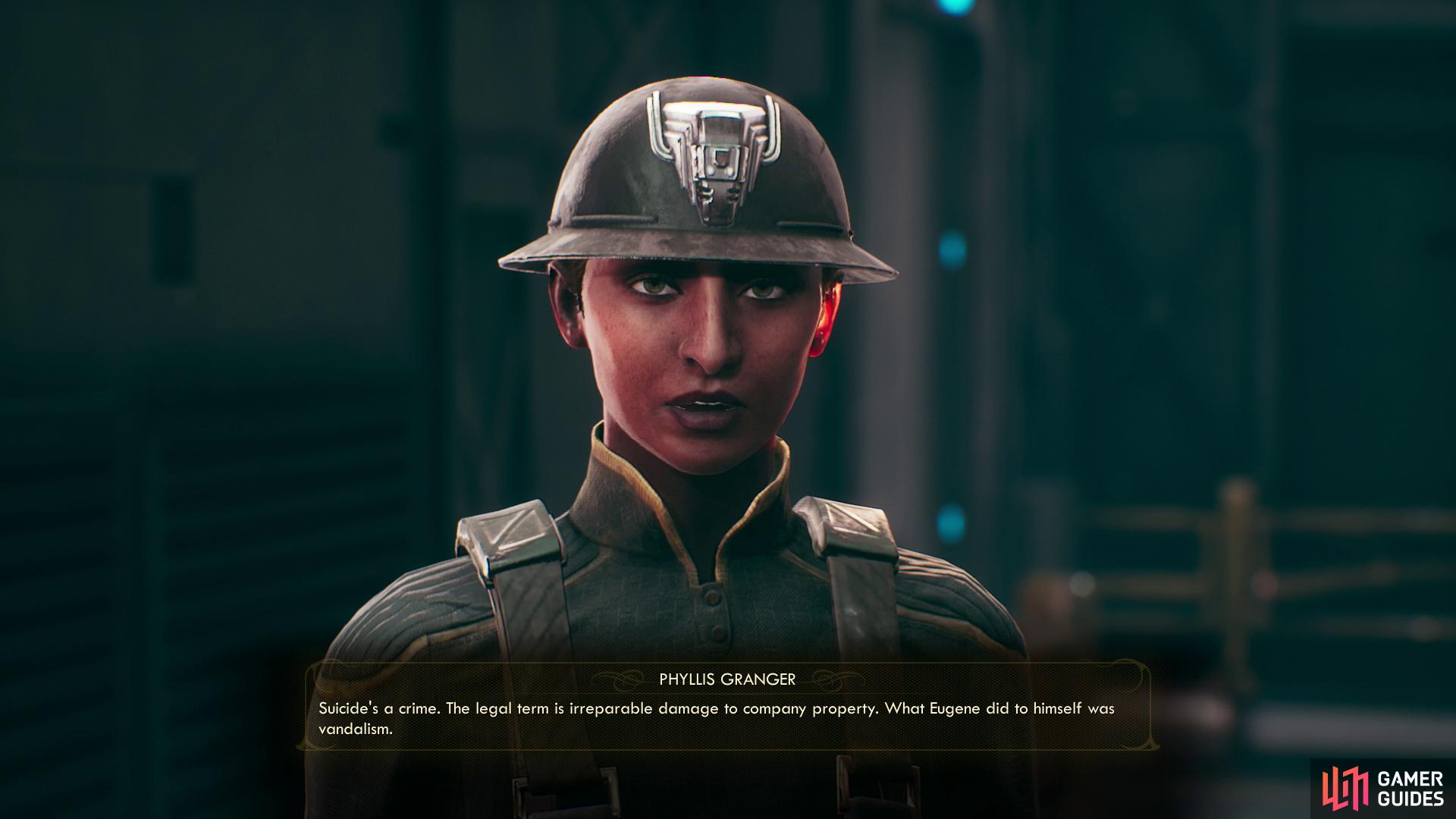
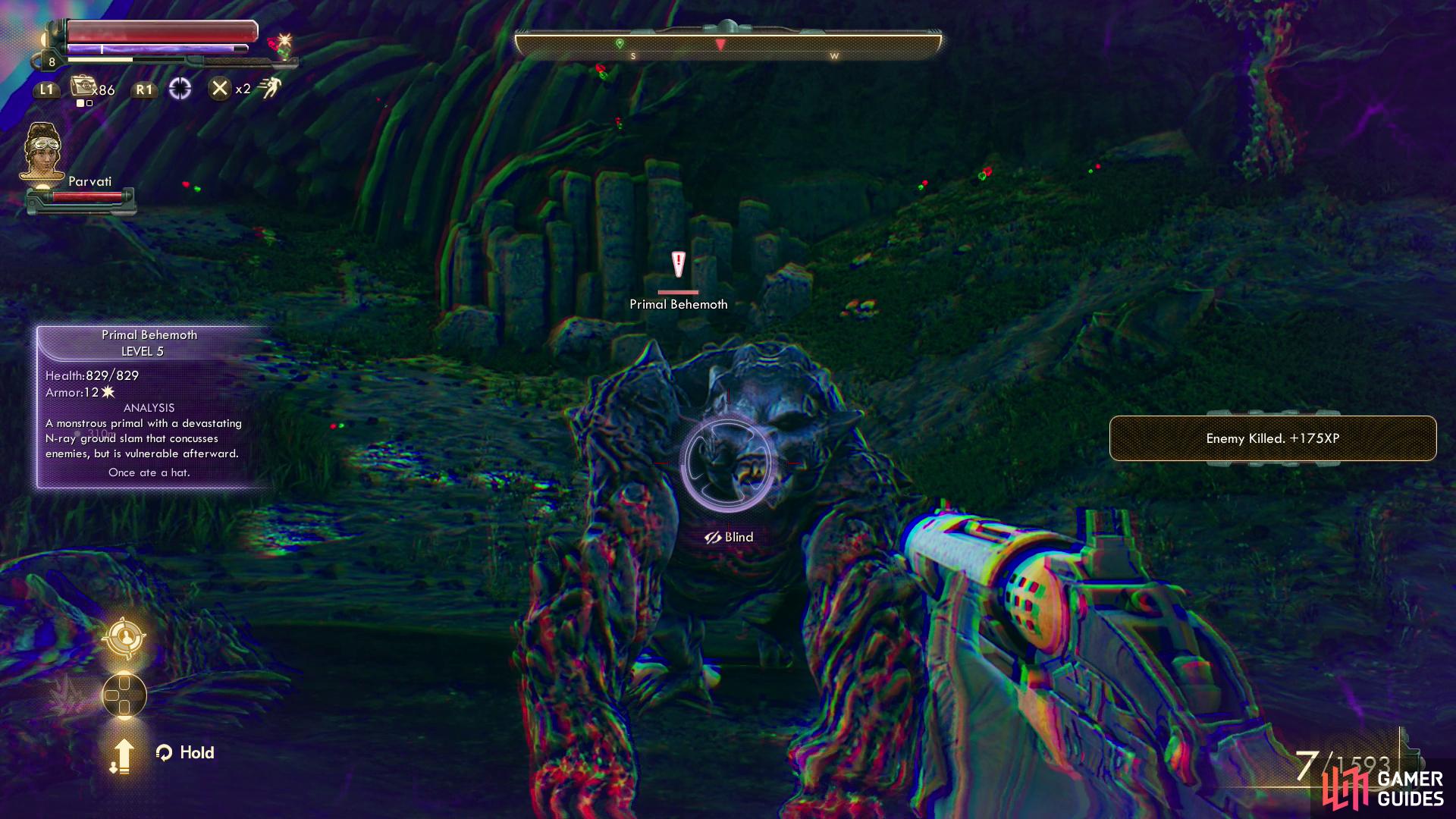
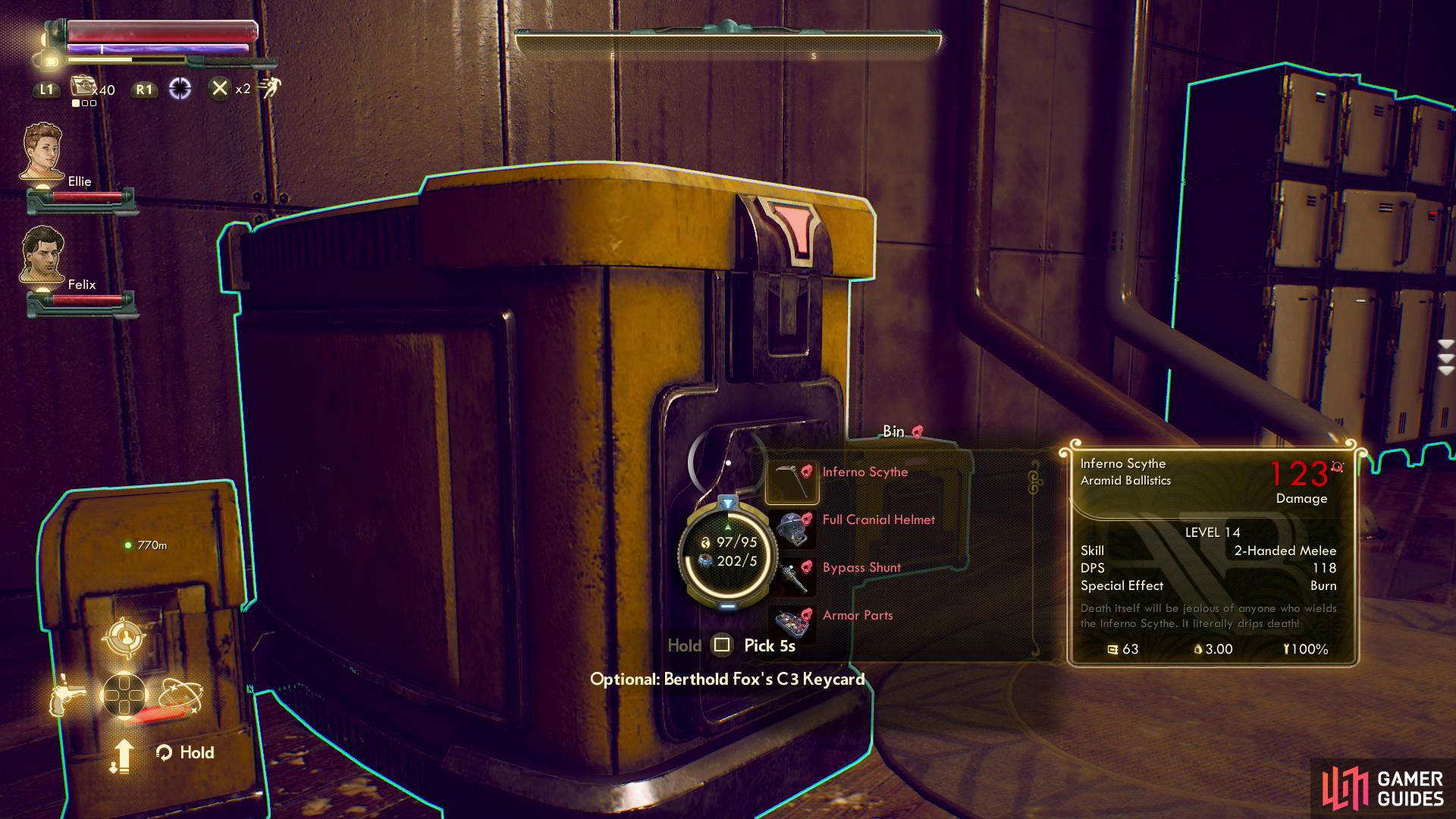
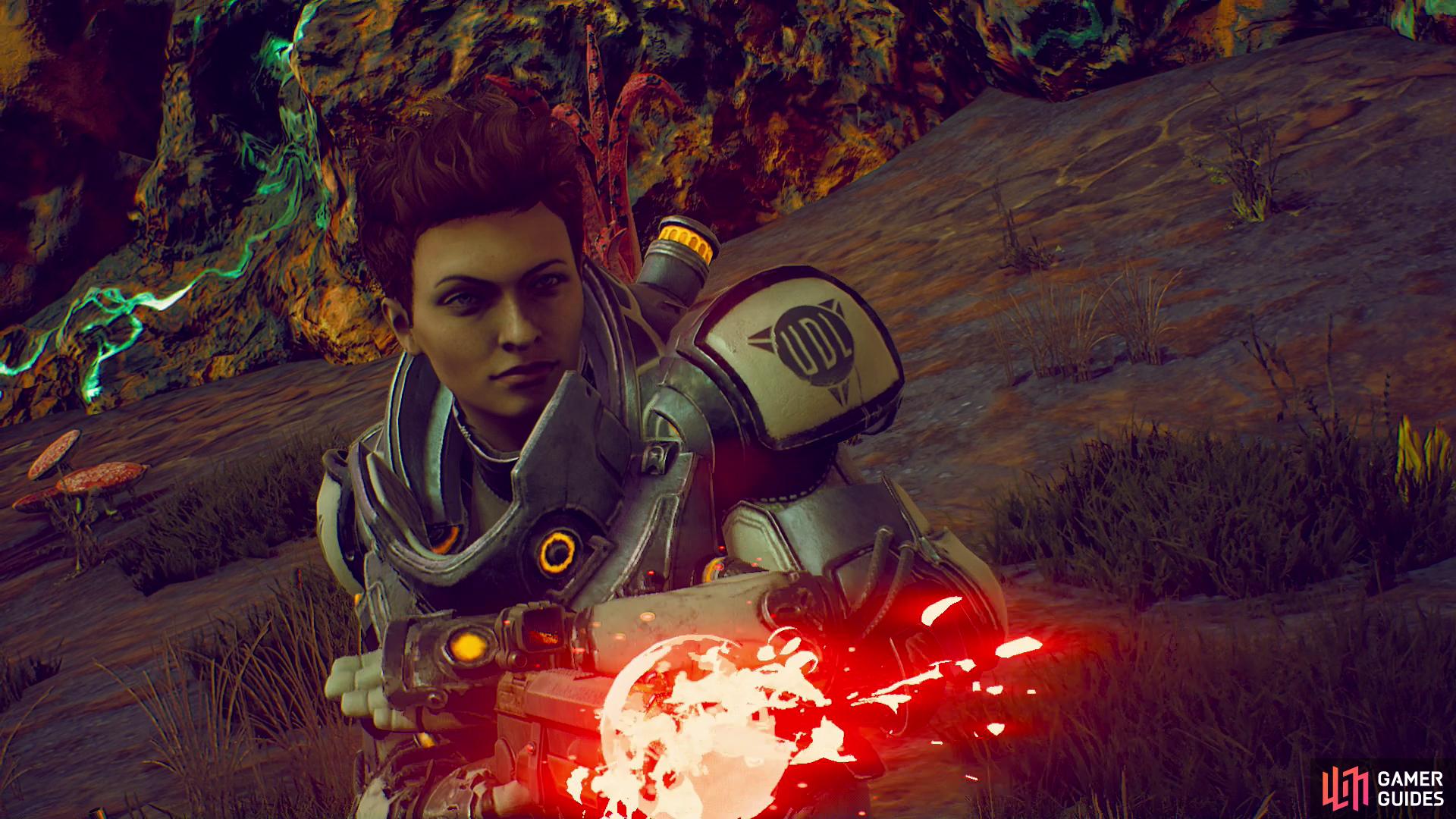
No Comments